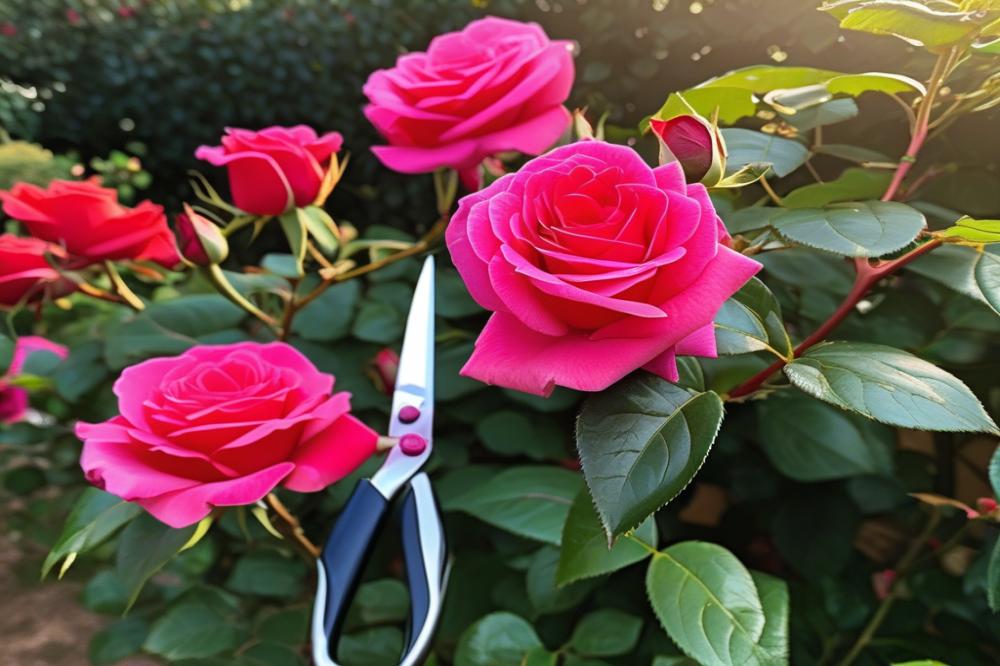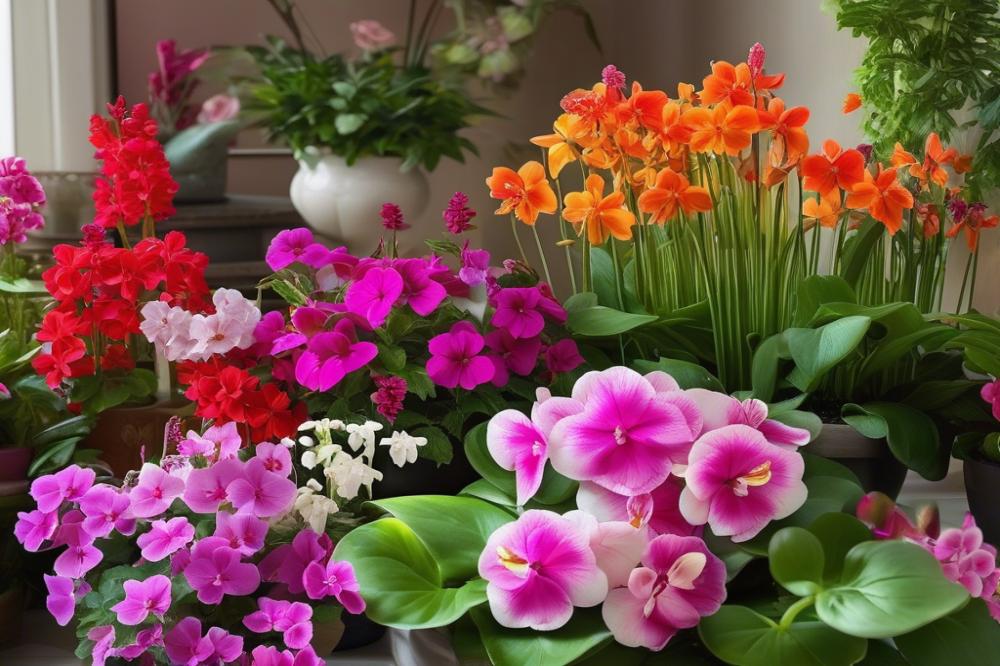Importance of Pruning in Rose Cultivation
Pruning is a crucial aspect of rose care that every gardener should understand. Without proper attention to this practice, it’s easy to end up with fewer blooms and a weaker plant. Detailed rose pruning techniques can unlock the full potential of your plants, making them flourish like never before. Caring for your roses not only enhances their beauty but also promotes overall health.
Implementing effective pruning strategies during spring and summer will help achieve maximum blooms. Regular maintenance of your roses ensures they grow vigorously and produce vibrant flowers. Using sharp pruning shears allows for clean cuts that minimize damage and encourage new growth. Rose bush growth can be stunted if the plants are not groomed appropriately.
Benefits of pruning roses
One key advantage of pruning is the increased air circulation around the plant. Healthy rose bushes thrive in environments where airflow is unrestricted. It also reduces the risk of disease, which can spread through crowded branches. Regular deadheading roses, or removing spent blooms, extends the flowering season and promotes additional budding. The result is a garden filled with colorful blooms throughout the growing season.
Investing time in pruning increases not only the beauty of your flowering shrubs but also their longevity. A well-pruned rose bush has a higher chance of surviving harsh conditions and pests. Therefore, adopting a careful approach to rose bush care will yield impressive results. Every gardener can benefit from understanding these basic principles and techniques. Maximize your blooms this season by prioritizing effective rose pruning!
Understanding pruning roses

Definition and Purpose of Pruning Roses
Pruning plays a vital role in the care of rose bushes. This process involves cutting away dead or overgrown branches. The goal is to promote better health and boost flowering. When you prune, you remove weak stems and encourage new growth. Proper techniques can lead to more beautiful blooms. A healthy rose bush responds well to consistent care. This practice helps maintain an appealing shape and prevents disease.
How Pruning Affects Rose Bush Growth and Flowering
Every cut you make influences the plant’s development. Removing old wood stimulates the growth of new stems. These new shoots are typically stronger and more productive. Additionally, reduced overcrowding allows sunlight and air to reach all parts of the bush. This exposure is crucial for the plant’s health. The result? A thriving rose bush that produces an abundance of flowers. With good care, you can achieve maximum blooms in your garden. A visually appealing garden enhances the overall atmosphere of your outdoor space.
Ideal Timing for Pruning: Spring and Summer
Timing is essential when it comes to effective pruning. Spring pruning is often recommended for rejuvenation. This is when the plants begin to awaken from winter dormancy. Flowers will flourish if you prune before the buds start to swell. Summer pruning also has its benefits. It can involve deadheading roses to encourage reblooming. Choosing the right moment contributes significantly to garden maintenance. Be mindful of local climate conditions as they may vary. Keeping these tips in mind will help optimize rose bush growth throughout the seasons.
rose pruning techniques

There are several effective rose pruning techniques that can help your garden thrive. Selective pruning focuses on cutting specific stems to encourage more blooms. Thinning, on the other hand, involves removing entire branches to improve air circulation. Shaping is about maintaining the overall form of your rose bush. Using the right approach can lead to maximum blooms and a vibrant garden.
Using sharp pruning shears is crucial for successful pruning. Dull tools can damage the plant and create an entry point for diseases. Always clean your shears before and after use to prevent the spread of any infection between plants. If you want a healthy rose bush, invest in good-quality tools.
Step-by-Step Guide to Pruning Techniques
Start by identifying stems that need attention. For selective pruning, choose the weakest or oldest stems to cut back. Aim to cut at a 45-degree angle, leaving about a quarter inch above an outward-facing bud. This encourages new growth to develop away from the center of the plant.
For thinning, look for crowded areas. Remove one or two branches from those spots. This allows sunlight to reach the inner parts of the bush. Your goal is to open up the center so air can flow freely. This is especially important for spring pruning.
Shaping requires an eye for aesthetics. Look at the overall silhouette of your bush. Remove any overly long or awkward branches, making sure the shape remains balanced. Summer pruning often emphasizes shaping, helping to maintain a pleasing appearance throughout the blooming season.
Don’t overlook deadheading roses. This is the practice of removing spent flowers. It stimulates the plant to produce more blooms and keeps your rose bush looking tidy. By incorporating these techniques into your garden maintenance routine, you’ll encourage healthy growth and impressive flowering shrubs.
Consider timing as well. Spring is ideal for most pruning activities, while late summer can be perfect for maintenance shape adjustments. Always be gentle with your plant. Each cut is a step towards fostering a flourishing outdoor space that bursts with vibrant colors.
Spring Pruning

Timing and significance of spring pruning
Spring is an essential time for rose pruning. As the weather warms, roses begin to wake from winter dormancy. Now is when you can prepare your plants for maximum blooms. Pruning during this season helps to remove any dead or damaged wood. A healthy rose bush will bloom much more vibrant and full when cared for properly in spring. Aim to prune your roses after the last frost, but before the first buds appear. This timing allows the plant to focus energy on new growth.
How to assess rose bushes before pruning
Examining your rose bushes is crucial before you start cutting. Look for dead or discolored stems; these need to go first. Healthy wood is green inside, while unhealthy wood appears brown. Study the overall shape of the bush. You want to encourage good air circulation. Assessing the health of the plant is also important. If it looks weak or diseases are present, take extra care. Focus on strengthening what remains.
Specific strategies for different types of roses
Different rose varieties require unique approaches to spring pruning. For hybrid tea roses, cut back about one-third of the plant. This encourages strong new growth and more flowers. With climbing roses, pruning should focus on removing old stems and shaping the bush. This allows light and air to reach the interior. Floribunda roses benefit from moderate pruning, usually thinning out older branches. Summer pruning may complement spring efforts, keeping growth in check.
Utilizing proper rose pruning techniques can improve your garden maintenance routine. Remember to use sharp pruning shears to make clean cuts. This helps prevent damage and disease spread. Don’t forget about deadheading roses throughout the growing season. Removing spent blooms encourages additional flowering. Proper care fosters a beautiful garden filled with healthy blooms, brightening any outdoor space.
Summer Pruning

When and Why to Prune in Summer
Timing is essential when it comes to summer pruning. Typically, you should prune during late summer, after the first wave of blooms has faded. This allows your roses to focus their energy on building more flowers. Trimming in this season helps reshape the plant and encourages a new flush of growth. A well-pruned rose bush can produce maximum blooms, enhancing the beauty of your garden.
Techniques for Maintaining Blooms and Overall Health
One effective method is deadheading roses. This technique involves removing spent flowers to encourage more blooms. By cutting the stem just above the first leaf, the plant sends signals to produce more buds. Providing enough air circulation is crucial, too. Prune crowded branches to allow light and air to reach the center of the bush. Healthy rose bush growth is dependent on proper spacing. Using sharp pruning shears will make the cuts clean, which reduces stress on the plant.
Tips for Addressing Overgrown or Leggy Roses
Overgrown roses may appear unruly but can be tamed with strategic cuts. Start by removing the longest stems, which often detract from a balanced shape. Focus on cutting back leggy growth to just above a healthy set of leaves. This encourages fuller, bushier plants. Regular garden maintenance ensures roses remain vibrant and attractive throughout the season. Inspect your rose bushes for any dead or diseased wood and remove it promptly. Pruning after blooming allows your flowering shrubs to flourish. Keep a close eye on your roses, and don’t hesitate to act if they begin to look untidy.
Deadheading Roses
What is deadheading and its importance in rose care
Deadheading refers to the practice of removing spent blooms from a rose bush. This simple act is vital for several reasons. It encourages the plant to focus its energy on producing new flowers rather than seeds. A rose bush that receives regular deadheading is likely to produce more vibrant blooms, leading to a more colorful garden. Not only does it enhance the overall aesthetic, but it also promotes healthier rose bush growth. Moreover, this technique helps to prevent disease by improving air circulation around the plant.
Techniques for effective deadheading
Using sharp pruning shears is essential for this task. Start by identifying faded flowers that have lost their charm. Cut the stem just above the first set of healthy leaves. Aim for a diagonal cut, as it helps the plant heal more swiftly. Timing matters too; spring pruning sets a strong foundation for blooming, while summer pruning keeps the blooms coming. Don’t be afraid to trim back any long stems as well. This keeps the rose bush looking tidy and allows for more sunlight to reach the center of the plant.
Benefits of deadheading for more blooms and bush health
The advantages of deadheading roses are numerous. You’ll notice that your plants respond by blooming more frequently. Regularly eliminating old flowers channels energy into new growth, maximizing blooms. A healthy rose bush will be robust and less susceptible to pests and diseases. Additionally, this practice encourages bushier growth, which can enhance the shape of your flowering shrubs. Ensuring proper deadheading will truly transform your garden into a vibrant display of colors.
Maintaining a Healthy Rose Bush
Ongoing garden maintenance is crucial for your rose bush. After pruning, your plants need attention to thrive and produce maximum blooms. Start by inspecting the soil around your roses. Healthy soil is rich in nutrients and drains well. Avoid letting water sit around the roots, as this can lead to rot.
Watering habits play a key role in the health of your plants. Deep watering is better than frequent, shallow watering. Aim for about an inch of water per week, especially during dry spells. Mulching around the base helps retain moisture and suppress weeds. It also keeps the soil temperature consistent, which roses appreciate.
Feeding your rose bush is equally important. Use a balanced fertilizer in the spring and follow up with a smaller dose later in the summer. Proper nutrition aids the overall growth and promotes stronger blooms. Organic fertilizers are often a good choice for flowering shrubs. They release nutrients slowly, giving plants a steady supply over time.
Be vigilant for pests and diseases after pruning. Check the leaves and stems regularly for signs of infestation. Aphids and spider mites are common nuisances that can hurt rose bush growth. If you spot any, you can wash them off with a strong stream of water. Keep an eye out for diseases like black spot or powdery mildew. Early detection can save your plants from serious damage.
Another effective technique to encourage blooms is deadheading roses. This means removing spent flowers to promote new growth. Use sharp pruning shears to make clean cuts. Do this regularly to keep your plants looking their best and increase the number of blossoms throughout the growing season. Both spring pruning and summer pruning are necessary steps in this process.
Finally, always give your rose bushes some love and care. A healthy rose bush will reward you with exquisite blooms and vibrant colors. Commitment to maintaining your plants after pruning will pay off with stunning displays that brighten up your garden.
Final Thoughts on Nurturing Your Rose Garden
Proper rose pruning is vital for health and beauty. By cutting back your plants at the right time and in the right way, you unlock their potential for maximum blooms. Without this essential step, your roses may become overgrown and less vibrant. Each snip you make plays a role in shaping the future of your garden.
Don’t be afraid to experiment with various rose pruning techniques. Everyone has their own approach, and what works best can vary from garden to garden. Trying something new can lead to unexpected and stunning results. It’s all part of the learning process. Engage with your roses; they offer such rewarding experiences when cared for thoughtfully.
Above all, remember that nurturing these beautiful flowers requires patience. A thriving rose garden is a labor of love. Enjoy the journey! With care and attention, you’ll see differences in growth and bloom. So grab your pruners and dive into the delightful world of roses. Make your garden a truly enchanting space.



